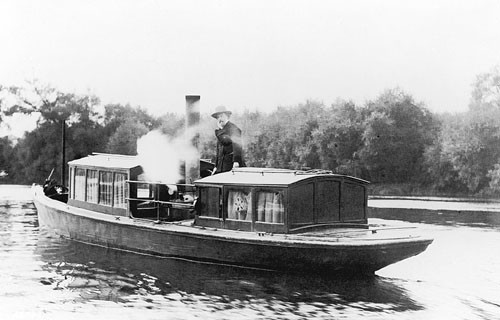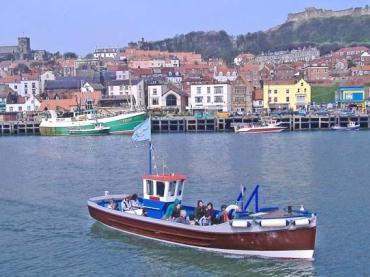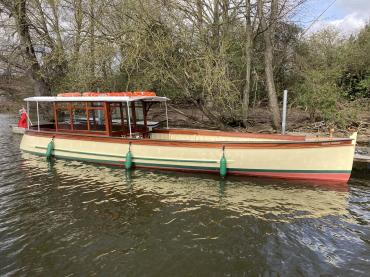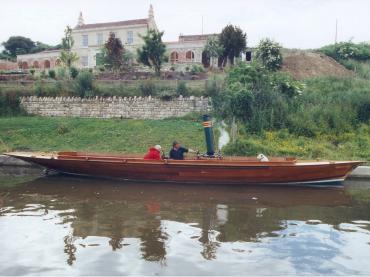


Details
Construction
Dimensions
History
WATERLILY is a steam launch designed, built and used by the Thornycroft family. She then remained in use on the Thames until after World War II and took part in the Festival of Britain celebrations in 1951. Although her steam plant was removed in 1919, it was stored and re-installed in 1977-78 when she was restored by apprentices of Vosper-Thornycroft (UK) Ltd. The vessel was presented to the National Maritime Museum by the Thornycroft family and in 2007 she was on display at NMMC in Falmouth since this site opened. She is currently in off-site museum storage.
Significance
What is the vessel’s ability to demonstrate history in her physical fabric?
WATERLILY is a very good example of an early luxury steam launch used on the Thames. Stored for many years, she retains most of her original features. She was built in 1866 to a longitudinal system, consisting of five deep web frames or bulkheads with intermediate floors and three longitudinal stiffening angles each side riveted to the plating. The plating itself is laid clinker fashion with riveted lap joints. This structure was an early pioneer of the form used in constructing the larger Vosper Thornycroft steel patrol boats. WATERLILY’S steam plant was removed when she was converted to motor in 1919, but the original engine and boiler were re-fitted in 1977 after being found in a gun emplacement on the Thornycroft family estate. At the same time, approximately one third of her wrought iron plates were replaced with mild steel as the original Swedish iron was no longer obtainable, although care was taken to make the riveted lap seams correctly with calico impregnated with red lead.
What are the vessel’s associational links for which there is no physical evidence?
WATERLILY has strong links to the Thornycroft family who both built and designed her. She was built mainly for use by John I Thornycroft’s father, the sculptor, Thomas Thornycroft, but remained in the Thornycroft family for many years until she was later donated for display at the National Maritime Museum.
How does the vessel’s shape or form combine and contribute to her function?
At 42 feet and with a very stylish shape, WATERLILY has the elegance and presence of a leading luxury steamer designed and built by the Thornycroft family. She originally had lateen sails which were set from short masts, to save stoking when the wind was fair.
Source: George Hogg, Registration Sub Committee, National Historic Ships Date: May 2011
Key dates
-
1866
Built by J. I. Thornycroft of Chiswick, London
-
1951
Took part in the Festival of Britain on the Thames
-
1977/1978
Full restoration and re-installation of steam plant by apprentices at Vosper Thorneycroft
-
2007
Presented to the National Maritime Musuem
Sources
Brouwer, Norman J, International Register of Historic Ships, Anthony Nelson, Edition 2, 1993
Steamboat Register: An illustrated Register of surviving steam vessels in the British Isles, Steam Boat Association of Great Britain, Edition 6, May 1994
Own this vessel?
If you are the owner of this vessel and would like to provide more details or updated information, please contact info@nationalhistoricships.org.uk







